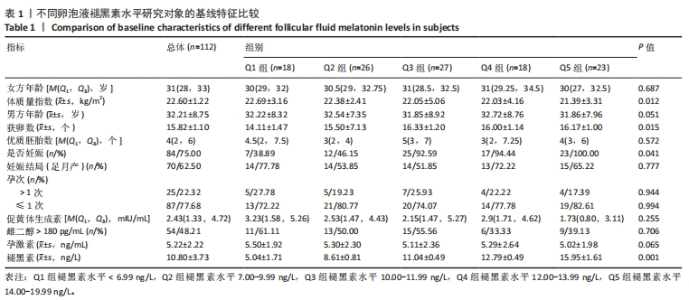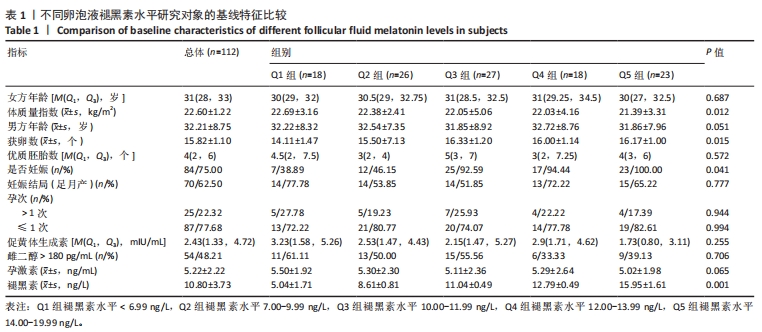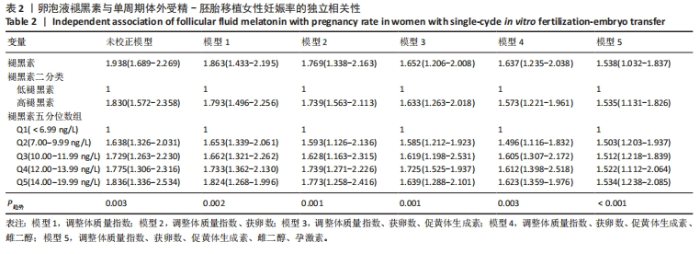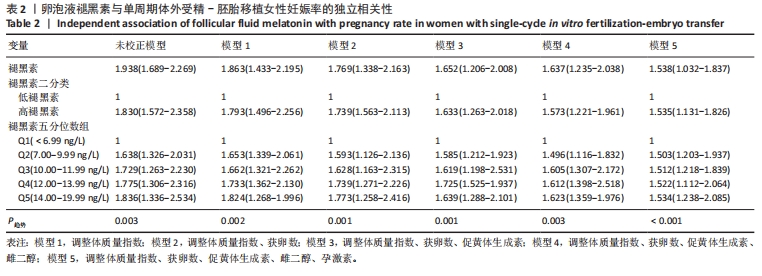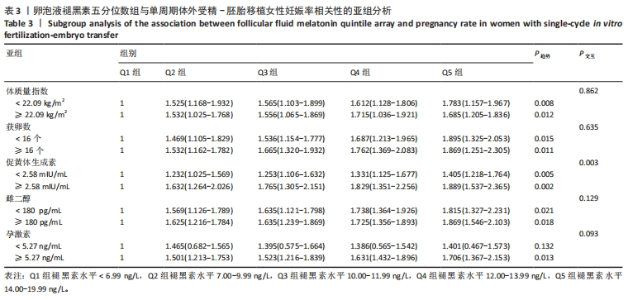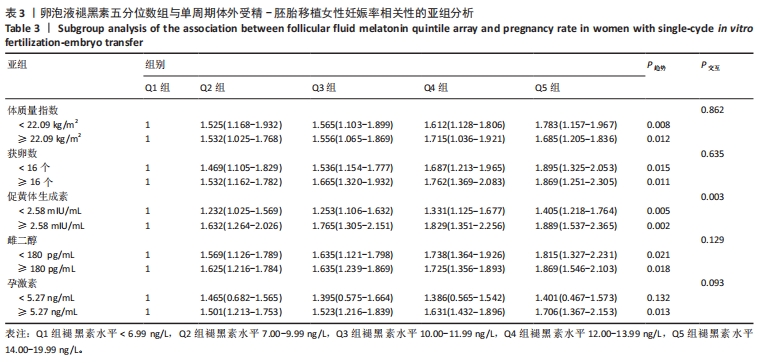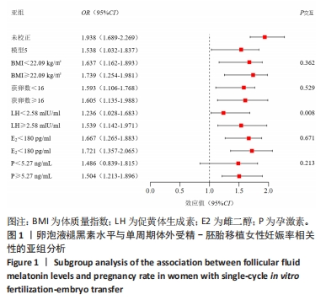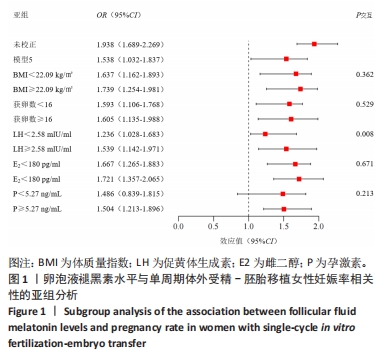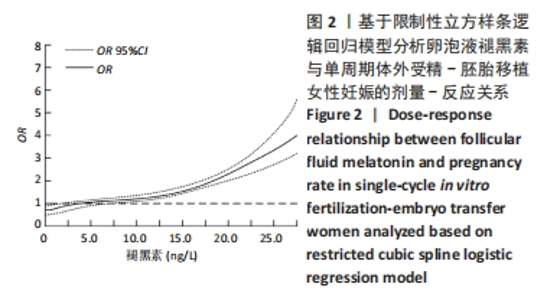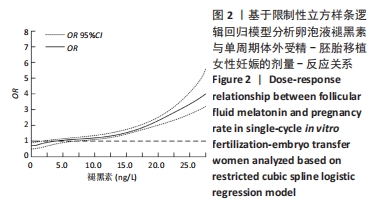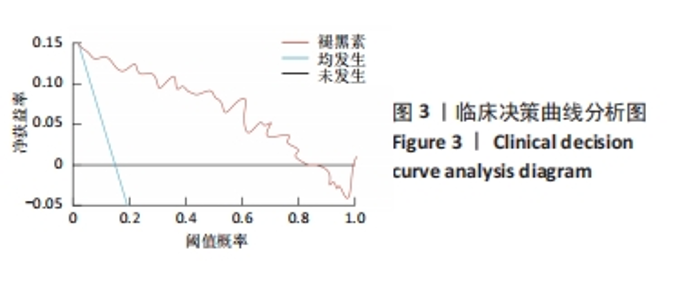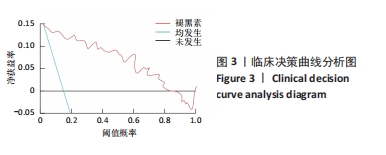[1] 沈炜晨,卢晓声,吕杰强.体外受精-胚胎移植术后复合妊娠研究进展[J].国际妇产科学杂志,2021,48(3):259-263+276.
[2] 李丹,朱丽霞,汪萌,等.6例透明带基因突变患者IVF-ET临床特征及助孕结局分析[J].生殖医学杂志,2022,31(1):102-106.
[3] CHIWARE TM, VERMEULEN N, BLONDEEL K, et al. IVF and other ART in low- and middle-income countries: a systematic landscape analysis. Hum Reprod Update. 2021;27(2):213-228.
[4] 李文澍,刘雪梅.卵泡期长效长方案在体外受精中的应用[J].国际生殖健康/计划生育杂志,2021,40(5):407-410.
[5] 左立莹,田莉.体外受精-胚胎移植妊娠自然流产相关因素研究进展[J].实用妇产科杂志,2021,37(10):752-755..
[6] 于珍,唐英,龙囿霖,等.超声评估子宫内膜容受性预测体外受精-胚胎移植临床妊娠结局的Meta分析[J].中国循证医学杂志,2022,22(3): 284-290.
[7] 卢佳,向小蔚,胡莉莉,等.子宫内膜及子宫内膜-肌层交界区超声参数预测体外受精-胚胎移植妊娠结局的临床价值[J].临床超声医学杂志, 2023,25(4):299-304.
[8] 王志强,丁仲军,陕文生,等.精子DNA损伤对体外受精-胚胎移植妊娠结局的影响研究[J].中国性科学,2023,32(1):11-14.
[9] 周婷婷,武颖,任军丽,等.体外受精-胚胎移植女性患者焦虑状况的影响因素分析及对妊娠结局的影响[J].现代生物医学进展,2023,23(4): 772-776.
[10] BUDANI MC, TIBONI GM. Nutrition, female fertility and in vitro fertilization outcomes. Reprod Toxicol. 2023;118:108370.
[11] SU G, WU S, WU M, et al. Melatonin improves the quality of frozen bull semen and influences gene expression related to embryo genome activation. Theriogenology. 2021;176:54-62.
[12] 张迪,苏姗,王强梅,等.褪黑素与多囊卵巢综合征关系的研究现状[J].中国临床药理学杂志,2021,37(3):337-340.
[13] 朱琦,丁丁,王凯娟,等.褪黑素对控制性超排卵周期中体外成熟卵母细胞受精后所获胚胎发育的影响[J].安徽医科大学学报,2022,57(4): 616-621.
[14] 武丽娟,曹莹丽,李琼,等.不孕女性选择辅助生殖医学中心的影响因素分析[J].护理研究,2023,37(1):181-185.
[15] 史蕾,马玲,覃菊玲,等.人成熟卵母细胞玻璃化冻融后经供精单精子显微注射受精并单囊胚冻融移植成功妊娠分娩[J].中国优生与遗传杂志,2022,30(12):2262-2266.
[16] 王春连,彭婀娜.3D-TVUD技术在不孕女性IVF-ET后妊娠结局评估中的应用价值[J].医学综述,2021,27(21):4337-4341.
[17] 史爱红,曹义娟,葛志娟,等.促排卵过程中添加重组人生长激素对卵巢储备功能低下患者IVF-ET结局的影响及妊娠结局的影响因素探讨[J].现代生物医学进展, 2022,22(15):2965-2970.
[18] 龙漫漫,贾晓倩,李智文,等.子宫内膜厚度与体外受精-胚胎移植结局的关联[J].中国生育健康杂志,2023,34(2):101-106+143.
[19] 江峰,杨岳洲,朱勇,等.输卵管因素不育夫妇年龄和值或差值对辅助生殖结局的影响[J].中国男科学杂志,2021,35(6):9-14.
[20] ZITKUTE V, KVIETKAUSKAS M, MASKOLIUNAITE V, et al. Melatonin and glycine protect uterus against ischemia/reperfusion injury in a rat model. Transpl Int. 2021;34(S3):34.
[21] 刘景,周梦鸽,李真,等.女性年龄与获卵数对体外受精-胚胎移植累积活产率的影响[J].郑州大学学报(医学版),2022,57(4):547-551. |
